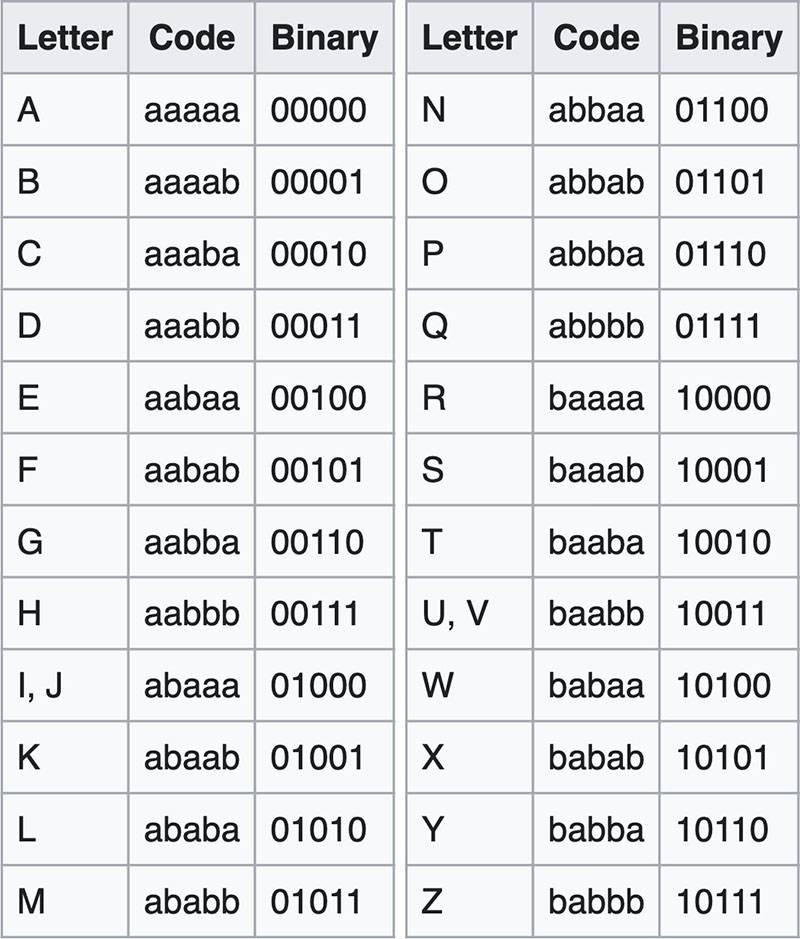Bacon's cipher is a method of steganographic message encoding devised by Francis Bacon in 1605. To encode a message, each letter of the plaintext is replaced by a group of five of the letters A or B. Those letters could also be some sort of differences in font. So that there could be two different fonts and one font represents A and other represents B.
There are two versions of Bacon cipher. One has 24 unique letters (I and J, U and V are combined) and the other has 26 (all letters are separated).
Here is the conversion table (24):

Here is the conversion table (26):

We can use Bacon's cipher in two ways.
First is just straight convert A and B segments to latin alphabet like this (26 letters version):
HELLO -> AABBB AABAA ABABB ABABB ABBBA
Second way is where the code really shines. We can use two different objects which one will be treated as A and the other as B. In this example, we will use different fonts. A will be regular letters and B will be bolded letters. Spaces with punctuation will be ignored.
We can use some help down here, J!
This transforms to AABBBAABAAABABBABABBABBBA which transforms to blocks by 5: AABBB AABAA ABABB ABABB ABBBA. So we get the same HELLO.
We also can use big and small letters and so on, like here:
we CAN usE somE hELp DoWN hERE, j!